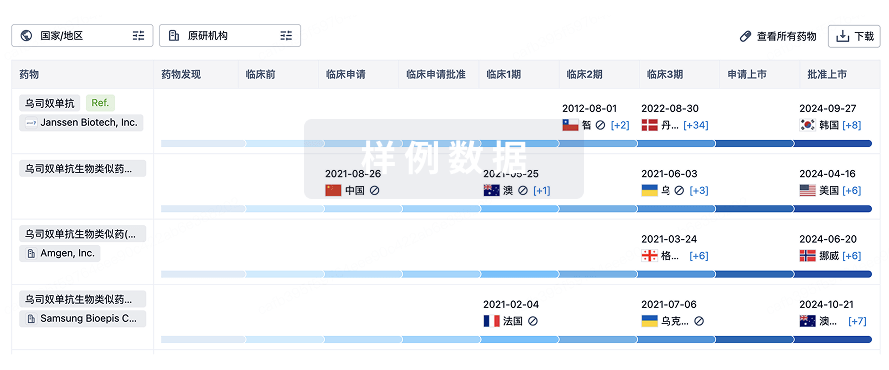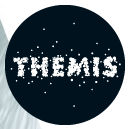预约演示
更新于:2025-10-18
Sym-021
更新于:2025-10-18
概要
基本信息
原研机构 |
非在研机构- |
最高研发阶段临床1期 |
首次获批日期- |
最高研发阶段(中国)- |
特殊审评- |
登录后查看时间轴
关联
6
项与 Sym-021 相关的临床试验NCT05162755
A Phase 1a/1b, Open-label, Multicenter Trial Investigating the Safety, Tolerability, and Preliminary Anti-neoplastic Activity of S095029 (Anti-NKG2A) as Monotherapy and in Combination With Sym021 (Anti-PD-1) in Patients With Advanced Solid Tumor Malignancies Followed by an Expansion Part With Triplet Combinations of S095029 and Sym021 and an Anti-HER2 mAb or Anti-EGFR mAbs (Futuximab/Modotuximab) in Patients With Metastatic Gastric or Colorectal Cancers
The purpose of the study is to investigate the safety, tolerability, and preliminary anti-neoplastic activity of S095029 alone and in combination with Sym021 in patients with advanced solid tumor malignancies followed by an expansion phase of triple combinations.
*The study sponsor has made the decision not to move forward to the expansion part of the study due to strategic considerations, unrelated to any safety issues or concerns. The study will be stopped after completion of dose escalation parts 1a and 1b of the study.
*The study sponsor has made the decision not to move forward to the expansion part of the study due to strategic considerations, unrelated to any safety issues or concerns. The study will be stopped after completion of dose escalation parts 1a and 1b of the study.
开始日期2021-10-15 |
申办/合作机构 |
NCT04195373
A Phase I Open-label, Safety Study of Intra-tumoral Application of TMV-018 in Combination With 5-FC or Anti-PD-1 Therapy in Patients With Tumors of the Gastrointestinal Tract
This study aims to determine the safety and tolerability of TMV-018 when given alone or in combination with the prodrug 5-Fluorocytosine (5-FC) or an anti-PD-1 checkpoint inhibitor in patients with gastrointestinal tumors. Furthermore, the maximum tolerated dose (MTD) and recommended Phase II dose of TMV-018 shall be determined.
开始日期2020-11-23 |
申办/合作机构 |
NCT04672434
A Phase 1, Open-Label, Multicenter Trial Investigating the Safety, Tolerability, and Preliminary Antineoplastic Activity of Sym024 (Anti-CD73) as Monotherapy and in Combination With Sym021 (Anti-PD-1) in Patients With Advanced Solid Tumor Malignancies
The primary purpose of this study is to see if Sym024 is safe and tolerable as monotherapy and in combination with Sym021 in patients with solid tumor malignancies.
开始日期2020-11-19 |
申办/合作机构 |
100 项与 Sym-021 相关的临床结果
登录后查看更多信息
100 项与 Sym-021 相关的转化医学
登录后查看更多信息
100 项与 Sym-021 相关的专利(医药)
登录后查看更多信息
4
项与 Sym-021 相关的文献(医药)2024-09-20·Nan fang yi ke da xue xue bao = Journal of Southern Medical University
[High RNF7 expression enhances PD-1 resistance of non-small cell lung cancer cells by promoting CXCL1 expression and myeloid-derived suppressor cell recruitment via activating NF-κB signaling].
Article
作者: Zhong, N ; Geng, B ; Sun, Z ; Zhao, W ; Wang, H
OBJECTIVE:
To investigate the mechanism of RNF7 for regulating myeloid-derived suppressor cells (MDSCs) in nonsmall cell lung cancer (NSCLC).
METHODS:
TIMER2.0 database and immunohistochemistry were used to analyze RNF7 expression level and its correlation with immune cell infiltration in non-small cell lung cancer. The impact of RNF7 expression levels on prognosis of lung cancer patients was analyzed using Kaplan-Meier survival analysis. CMT-167 cells with RNF7 overexpression or knockdown were inoculated subcutaneously in C57BL/6 mice, and the mice in RNF7 knockdown group were treated with anti-PD-1 or IgG isotype control 7 days after the inoculation. The tumor tissues were harvested after 30 days for tumor volume measurement, detection of S100A8+A9 and Gr-1 expressions with immunohistochemistry, and analysis of MDSC infiltration. Gene set enrichment analysis (GSEA) was performed to identify the potential pathways regulated by RNF7 in NSCLC. Western blotting and luciferase assays were used to assess the impact of RNF7 on the NF-κB signaling pathway. ELISA and RT-qPCR were used to measure chemokine (C-X-C motif) ligand 1 (CXCL1) expression.
RESULTS:
RNF7 expression was significantly upregulated in NSCLC, and high RNF7 expression levels were associated with poor prognosis of the patients (P < 0.001). TIMER2.0 analysis revealed a positive correlation between RNF7 expression and MDSC infiltration (P < 0.001). GSEA suggested that RNF7 was enriched in the NF-κB signaling pathway. In NSCLC cells, RNF7 knockdown significantly inhibited NF-κB activation and reduced CXCL1 expression. In the tumor-bearing mice, RNF7 overexpression significantly increased MDSC infiltration in the tumor tissue, and RNF7 knockdown obviously reduced MDSC infiltration and enhanced the efficacy of anti-PD-1 therapy.
CONCLUSION:
High expression of RNF7 in NSCLC cells promotes CXCL1 expression by activating the NF-κB signaling pathway, thus leading to the chemotactic recruitment of MDSCs, which contributes to tumor resistance to antiPD-1 therapy.
2020-12-01·Journal of hematology & oncology1区 · 医学
CDK7 inhibitor THZ1 enhances antiPD-1 therapy efficacy via the p38α/MYC/PD-L1 signaling in non-small cell lung cancer
1区 · 医学
ArticleOA
作者: Dong, Xiaorong ; Wu, Gang ; Chen, Yaobing ; Zhou, Xiaoshu ; Xu, Shuangbing ; Zhang, Tao ; Meng, Rui ; Liu, Li ; Hong, Jiaxin ; Zhang, Sheng ; Wang, Jian ; Zhang, Ruiguang ; Tang, Jing ; Zong, Yan ; Lin, Zhenyu ; Yang, Kunyu ; Xu, Yingzhuo
Abstract:
Background:
The cyclin-dependent kinase 7 (CDK7) subunit of TFIIH regulates RNA polymerase-II-based transcription and promotes tumor progression. However, the mechanisms involved in CDK7-mediated immune evasion are unclear in non-small cell lung cancer (NSCLC).
Methods:
RNA silencing and pharmacologic inhibitors were used to evaluate the functions of CDK7/p38α/MYC/PD-L1 axis in cancer cell proliferation and antiPD-1 therapy resistance. Flow cytometry was performed to detect the status of the immune microenvironment after CDK7 inhibition and antiPD-1 therapy in vivo. CD8 depletion antibodies were used to assess the role of CD8+ T cells in combined CDK7 and PD-1 blockade. The associations among CDK7, p38α, MYC, PD-L1, infiltrating T cells, and survival outcomes were validated in two tissue microarrays and public transcriptomic data of NSCLC.
Results:
High CDK7 mRNA and protein levels were identified to be associated with poor prognosis in NSCLC. CDK7 silencing and CDK7 inhibitor THZ1 elicited apoptosis and suppressed tumor growth. Moreover, CDK7 ablation specifically suppressed p38α/MYC-associated genes, and THZ1 inhibited MYC transcriptional activity through downregulating p38α. CDK7 inhibition sensitized NSCLC to p38α inhibitor. Further, THZ1 suppressed PD-L1 expression by inhibiting MYC activity. THZ1 boosted antitumor immunity by recruiting infiltrating CD8+ T cells and synergized with antiPD-1 therapy. The CDK7/MYC/PD-L1 signature and infiltrating T cell status collectively stratified NSCLC patients into different risk groups.
Conclusion:
These data suggest that the combined CDK7 inhibitor THZ1 and antiPD-1 therapy can be an effective treatment in NSCLC.
2018-10-01·ANNALS OF ONCOLOGY
Baseline blood immune profiling to predict response to antiPD-1 in patients with advanced non-small cell lung cancer
Article
作者: Bidard, F-C ; Pierga, J-Y ; Lantz, O ; Lopez-Lastra, S ; Le Bourgeois, T ; Romano, E ; Beaucaire-Danel, S ; Servois, V ; Daniel, C
33
项与 Sym-021 相关的新闻(医药)2025-09-24
·今日头条
结直肠癌(CRC)是全球第二大致死性癌症,受筛查不完善等因素影响,约25%患者初诊即为晚期或转移性(mCRC),5年生存率仅约14%。目前化疗联合抗VEGF、抗EGFR等分子靶向治疗是其一线方案,但部分患者治疗后进展且后续效果有限,临床亟需新疗法。随着肠道菌群与疾病关联的揭示,粪便菌群移植(FMT)成为新兴生物治疗手段。研究显示,FMT可调控肠道菌群,其代谢产物激活肠黏膜T细胞、树突状细胞等免疫细胞,调节免疫功能以改善癌症预后。
《Cureus》曾报道
全球首个突破案例
:
1例IV期pMMRMSS型mCRC患者,经FMT联合贝伐珠单抗+替雷利珠单抗治疗后,肿瘤缩小至可手术范围,最终达病理完全缓解(pCR)。
这一案例绝非偶然,它不仅印证了FMT联合免疫治疗在难治性结直肠癌中的巨大潜力,更给无数陷入治疗困境的患者点亮了新的希望——曾经“束手无策”的晚期病情,如今可能通过调节肠道菌群这一创新路径迎来转机。这场从“肠道”到“肿瘤”的治疗突破,有望让更多患者摆脱病痛桎梏,重获新生!
▲截图源自“PMC”
化疗失败的IV期肠癌患者,靠粪菌移植联合抗PD-1实现病理完全缓解,病灶几乎消失,肿瘤标志物骤降
该患者是一位57岁男性,确诊为IV期pMMRMSS(错配修复充分/微卫星稳定)结直肠癌伴肝转移,半月来反复腹痛、大便形状异常。基因检测提示KRAS/NRAS/BRAF野生型。患者先后接受“抗EGFR+改良FOLFOX6”“抗VEGF+FOLFOXIRI”两次治疗,但因化疗副作用严重停药,随后改为“粪便微生物移植(FMT)胶囊+抗VEGF+抗PD-1”方案。治疗后疗效显著,结果显示如下:
1、
肿瘤标志物骤降
:
癌胚抗原(CEA)由入院时30.1μg/L降至5.38μg/L
,
CA199由62.64KU/L降至30.61KU/L
(详见下表)。
▲数据源自“Cureus”,全球肿瘤医生网医学部整理汇总
2、
影像学明显改善
:治疗前,结肠镜见距肛缘70cm处菜花状病变,CT示升结肠4.9cm×4.4cm肿块、腹膜后8.4cm×4.7cm转移淋巴结、肝右叶10.3cm×8.7cm巨大转移灶(详见下图A、B、C);治疗后,
结肠、肝脏、淋巴结病灶分别缩小至2.0cm×1.3cm、2.6cm×2.3cm、2.2cm×1.7cm
,
部分病灶消失,达部分缓解(PR),肿瘤缩小至可根治性手术范围
。随后患者接受肝转移灶微波消融(MWA)及结肠原发灶+相关淋巴结根治性切除术,最终
实现病理学完全缓解(pCR)
,且无严重副作用。
▲图源“Cureus”,版权归原作者所有,如无意中侵犯了知识产权,请联系我们删除
总之,该案例充分证实,粪便菌群移植(FMT)在晚期/转移性结直肠癌治疗中极具潜力,可改善患者对免疫检查点抑制剂(ICI)的反应,为提高生存率开辟新路径。
肠道菌群:蕴藏在肠道内的“抗癌秘钥”
人体微生物群由近40万亿个微生物、3000个物种组成,包括细菌、真菌和病毒等。这些微生物之间的丰富度各异,个体之间成分多样,对维持系统稳态和功能稳定性,具有重要意义。人体微生物群绝大多数(超过97%)成员位于胃肠道,尤其是结肠。因此,肠道是除了淋巴组织外,人体的另一个重要的免疫器官,人体约70%的免疫细胞都集中在肠道。
对于大多数肿瘤患者来说,调节肠道菌群有助于提升机体免疫功能、增强目前抗癌药物的疗效,同时,还有助于提高患者对传统治疗方法的敏感性,降低放化疗及手术治疗的副作用。
目前,如何将粪菌移植、活性益生菌定制、补充益生元及调控饮食等治疗手段整合归一,真正实现个体化“精准”调控肠道菌群,从而提高免疫治疗及抗癌效果。
肿瘤患者如何检测肠道菌群?
研究发现,每个人的肠道菌群组成具有独特性,癌症患者与健康人群的菌群结构差异显著。肠道菌群检测通过二代高通量基因测序技术(16S rDNA),可精确解析:菌群种类、数量及丰度分布;评估慢病进展、预警疾病风险;反映癌症患者菌群平衡情况,为个性化“养菌+种菌”方案提供依据,目标包括:平衡免疫系统、增强免疫细胞抗肿瘤活性、辅助防癌抗癌。
检测申请流程:
1、
样本提交
:按标准采集并提交粪便样本;
2、
权威检测
:由全球肿瘤医生网送专业机构进行高通量测序;
3、
精准解读检测结果
:如发现异常,协助患者对接肿瘤免疫权威专家制定调节方案。
小编寄语
肠道菌群作为人体内部生态的关键“守护者”,与癌症防治紧密交织,恰似为抗癌之战精心构筑的一道 “隐形防线”。通过科学有效的调节举措,不仅能为患者的整体健康状况筑牢根基、添砖加瓦,更能显著提升抗癌及免疫治疗的 “战斗力”,巧妙化解手术与放化疗带来的诸多副作用“难题”,肠道菌群调节也称为了继免疫细胞疗法、癌症疫苗之后的又一“抗癌新星”。
最后全球肿瘤医生网小编温馨提示,如果癌症患者无法维持正常的营养需求和健康的体重时,需及时接受专业的营养支持,包括口服营养补充、肠外营养支持等。想了解粪菌移植、肠道菌群或定制益生菌更多讯息的患者,可将近期影像和病理检查结果、治疗经历等资料,提交至
全球肿瘤医生网医学部
,初步评估营养状况。
参考资料
[1]Cheng X,et al.Successful Treatment of pMMR MSS IVB Colorectal Cancer Using Anti-VEGF and Anti-PD-1 Therapy in Combination of Gut Microbiota Transplantation: A Case Report. Cureus. 2023 Jul 24;15(7):e42347.
https://www-ncbi-nlm-nih-gov.libproxy1.nus.edu.sg/pmc/articles/PMC10445052/
本文为全球肿瘤医生网原创,未经授权严禁转载
免疫疗法临床结果临床研究
2025-09-18
·今日头条
粪便微生物移植(FMT)是克服难治性黑色素瘤患者对免疫检查点抑制剂耐药的潜在策略,但它在一线治疗中的作用尚未明确。为填补这一空白,研究人员开展了一项I期临床研究(NCT03772899),旨在评估FMT联合PD-1抑制剂[纳武单抗(nivolumab)或帕博利珠单抗(pembrolizumab)]用于一线治疗的临床疗效。
结果令人振奋:该联合方案的
客观缓解率高达65%
,为晚期黑色素瘤患者带来了新的治疗希望与选择!这一突破性数据不仅证实了FMT与免疫治疗联用在一线场景的巨大价值,更让肿瘤患者在治疗之初就拥有了更高效的对抗方案,为战胜癌症点亮了更明亮的曙光!
▲截图源自“Nat Med”
肠道菌群成抗癌关键!粪菌移植(FMT)联合PD-1抑制剂,一线治疗黑色素瘤,ORR高达65%
该研究(NCT03772899)共纳入20名一线接受抗PD-1治疗的黑色素瘤患者,所有患者在启动抗PD-1单药治疗前至少1周,均接受了一次来自健康志愿者的口服胶囊剂型粪便微生物移植(FMT)。
结果显示,该联合方案的
客观缓解率达65%(20例中13例),其中4例(20%)实现完全缓解
;同时,
应答者体内免疫原性细菌显著增多,有害细菌则明显减少
。
▲图源“Nat Med”,版权归原作者所有,如无意中侵犯了知识产权,请联系我们删除
综上,该研究结果证实,来自健康供体的FMT在黑色素瘤一线治疗中具有良好的安全性,其与免疫检查点抑制剂的联合应用价值值得深入探索。
肠道菌群:人体的“第二基因组”
人体肠道内栖息着数以万亿计的微生物,它们构成复杂精妙的生态系统,即肠道菌群。这些微生物的基因总量远超人类自身基因数量,因此肠道菌群被形象地称为人体的“第二基因组”。
长期以来,肠道菌群被认为主要参与食物消化与营养吸收,而越来越多的研究证实,其在人体健康诸多方面均发挥关键作用,尤其在免疫系统调节与癌症治疗领域意义重大。肠道菌群可通过以下方式调节:
1、
益生菌
:作为“活的、非病原性微生物”,益生菌在适量摄入时能为宿主带来多种益处。多项研究显示,它可提升机体免疫功能,对改善肝癌、肺癌、肾癌、结直肠癌等多种癌种的预后具有积极意义,有望成为癌症与免疫治疗领域的热门研究方向。
2、
粪便微生物组移植(FMT)
:从健康个体捐献的粪便中分离菌群,以菌液或胶囊形式,通过内窥镜灌注或口服等方式移植到患者肠道,从而重建新的肠道菌群、恢复微生物多样性(详见下图)。
▲图源“Curr Treat Options Oncol”,版权归原作者所有,如无意中侵犯了知识产权,请联系我们删除
小编寄语
在癌症治疗与康复过程中,营养支持治疗扮演着举足轻重的角色。及时、恰当补充各类营养素,对改善患者营养状况、增强机体免疫力、提高治疗耐受性及减轻治疗副作用均大有裨益。
然而,肿瘤患者的营养基础、个人情况、癌种、分期及治疗方式存在显著差异,对应的饮食调理方案也需个体化制定。建议患者秉持均衡营养、健康饮食的原则,结合自身病情与癌种特点,筛选特定菌种以辅助肠道建立优势菌群基础,同时改善肠道环境、排除毒素及有害菌,进而促进病情改善、达到预期治疗应答。如果您想了解定制益生菌或更多营养评估和健康指导信息,可将治疗经历等,提交至
全球肿瘤医生网医学部
,初步评估营养状况。
参考资料
[1]Routy B,et al. Fecal microbiota transplantation plus anti-PD-1 immunotherapy in advanced melanoma: a phase I trial[J]. Nature medicine, 2023, 29(8): 2121-2132.
https://www-nature-com.libproxy1.nus.edu.sg/articles/s41591-023-02453-x
本文为全球肿瘤医生网原创,未经授权严禁转载
免疫疗法微生物疗法
2025-09-10
点上方蓝字“ioncology”关注我们,
然后点右上角“…”菜单,选择“设为星标”
由国际肺癌研究协会(IASLC)主办的2025年世界肺癌大会(WCLC2025)于2025年9月9日在西班牙巴塞罗那圆满闭幕。作为肺癌及其他胸部恶性肿瘤领域全球领先的多学科肿瘤学盛会,本次大会吸引了来自世界各地的众多专家学者参会,围绕肺癌及其他胸部恶性肿瘤的前沿诊疗进展展开了深入探讨。
大会特设“Highlights of the Day”专场,旨在回顾当日领域重磅研究进展,为全球肺癌领域研究者提供了聚焦当日核心进展的高效途径,以便快速捕捉研究动态、同步前沿认知。在会议现场,《肿瘤瞭望》特邀“免疫治疗”领域“Highlights of the Day”专场汇报者罗马Regina Elena国家癌症研究所Federico Cappuzzo教授接受专访,回顾WCLC免疫治疗领域重磅研究进展,特此整理,以飨读者。
专家简介
Federico Cappuzzo 教授
罗马Regina Elena国家癌症研究所肿瘤内科主任
意大利肿瘤内科学会(AIOM)、欧洲肿瘤内科学会(ESMO)、美国临床肿瘤学会(ASCO)、国际肺癌研究协会(IASLC)会员
曾任国际肺癌研究协会(IASLC)教育委员会主席
《Lung Cancer》杂志编辑委员会成员
肿瘤瞭望
您在Highlights of the Day - Sunday Abstracts环节中,分享了转移性非小细胞肺癌免疫治疗研究亮点内容,请您为我们介绍下相关亮点有哪些?
Federico Cappuzzo教授
我主要展示了四项相关研究成果:第一项试验为ASTRUM-002研究(摘要号:OA05.01),旨在评估斯鲁利单抗联合 HLX04(贝伐珠单抗生物类似药)与化疗(培美曲塞联合卡铂)的方案,相较于斯鲁利单抗联合化疗的方案,在非鳞非小细胞肺癌(NSCLC)治疗中的疗效。该研究结果表明,在化疗联合免疫治疗基础上添加抗血管生成药物相较于免疫联合化疗方案,其无进展生存期(PFS)并无显著获益优势。
第二项试验为ZEAL-1L研究(摘要号:OA05.04),评估了PARP抑制剂尼拉帕利联合帕博利珠单抗用于晚期/转移性非小细胞肺癌维持治疗安全性及有效性,结果显示,尼拉帕利未能改善盲审评估的PFS,关键次要终点亦未见获益。安全性与已知特征一致,个别患者出现药物相关死亡事件。这一阴性结果提示,尽管这一方案有临床前数据支持,但试验中未观察到获益证据;此外,在总生存期方面,我们无法排除该治疗可能存在的安全性影响。
第三项试验针对脑转移患者——NIVIPI-Brain研究(摘要号:OA05.03),评估了纳武利尤单抗(Nivolumab)、伊匹木单抗(Ipilimumab)联合化疗用于合并同步脑转移的非小细胞肺癌患者的疗效。该试验同样未达到主要终点——研究预设的主要终点 “6个月颅内PFS率” 未实现。
第四项试验为IFCT-1805 Elderly研究(摘要号:OA05.02),法国研究者评估了一线阿替利珠单抗(Atezolizumab)联合化疗在晚期非小细胞肺癌老年患者中的疗效,这类患者在日常临床实践中占比很高。该研究也未达到总生存期这一主要终点,但包括缓解率、无进展生存期、疾病控制率在内的所有其他终点,均显示添加免疫治疗具有优势,以上便是免疫治疗相关主要最新进展。
Professor Federico Cappuzzo:I just recapitulated the data that were presented yesterday at this meeting—specifically the data on immunotherapy. I displayed data from four different clinical trials.
The first trial considered the addition of an Anti-angiogenic agent to chemo-immunotherapy. This trial was completely negative, showing no benefit from the addition of a biosimilar of bevacizumab to chemo-immunotherapy.
The second trial explored the role of PARP inhibitors in combination with immunotherapy, again in patients with metastatic non-small cell lung cancer. Although this approach is supported by preclinical data, no evidence of benefit was observed in the trial. Moreover, in terms of overall survival, we cannot exclude a detrimental effect of this treatment.
The third trial was in patients with brain metastases, it evaluated the efficacy of Nivolumab、Ipilimumab combined with chemotherapy in NSCLC With synchronous Brain metastases. Again, this trial did not meet its primary endpoint—the 6-month disease control rate, which was the primary endpoint of this study, was not achieved. Finally, French investigators evaluated the aefficacy of first-line Atezolizumab plus chemotherapy in elderly patients with advanced NSCLC—a group of patients very well represented in our daily clinical practice. This study also did not meet its primary endpoint of overall survival. However, all other endpoints—response rate, progression-free survival, and disease control rate—were certainly in favor of the addition of immunotherapy. So that was probably the main update presented yesterday regarding immunotherapy.
(上下滑动可查看)
肿瘤瞭望
您在本次世界肺癌大会(WCLC)上公布的 IMscin002 研究最终分析显示,超过 77% 的患者在同时接受过皮下注射和静脉注射阿替利珠单抗后,后续治疗选择了皮下注射方式。您认为这种给药途径的转变,会对治疗疗效、安全性、患者生活质量及治疗依从性产生哪些深远影响?这是否有望重新定义未来免疫治疗的应用模式?
Federico Cappuzzo教授
IMscin002试验探索了阿替利珠单抗皮下注射的可行性。研究中让患者在皮下注射和静脉注射之间选择偏好方式,结果明确显示患者更倾向于皮下注射。此外,这种给药方式能为患者带来诸多优势,尤其是在减少门诊就诊时间方面;同时对医院而言,也能优化药物制备的流程时间。因此,这一方式可能对所有相关人员都十分便捷。本次大会上公布的是该研究的更新结果,通过更长时间的随访证实,所有预设终点均已达到。
Professor Federico Cappuzzo:The IMscin002 trial explored the possibility of administering atezolizumab subcutaneously. Patients indicated their preference between subcutaneous and intravenous injection, and the trial clearly showed that patient preference is in favor of subcutaneous use—that is important to remember. Additionally, this approach offers many advantages for patients, particularly in terms of the time they have to spend in the clinic, as well as for hospitals in terms of organizational timing for drug preparation. So this is an approach that is really convenient for everyone, probably. That is the major message. What was presented at this meeting is an update of these results, confirming with longer follow-up that, in fact, all these endpoints were met.
(上下滑动可查看)
肿瘤瞭望
结合相关研究进展,您如何看待免疫治疗联合抗体药物偶联物(ADCs)在晚期非小细胞肺癌中的应用潜力与挑战?
Federico Cappuzzo教授
我认为ADCs联合免疫治疗是一种极具潜力的方案。我们需要大型临床试验数据来明确这类药物的作用定位。目前已有部分数据显示该方案具有潜在疗效,我们期望ADCs能优于标准化疗。同时我们也清楚,当前需要关注这种联合方案可能产生的毒性反应。
Professor Federico Cappuzzo:I think the combination of ADCs and immunotherapy is a very promising approach. We need data from large clinical trials to clearly understand the role of these agents. Currently, we have some data showing the potential efficacy of this approach. What we hope is that ADCs could be superior to standard chemotherapy. We also know that, at present, we need to pay attention to the toxicity that may result from this combination.
(上下滑动可查看)
肿瘤瞭望
本次大会还设有“特殊人群免疫治疗”专场,分享相关研究进展。基于大会公布的研究成果,哪项研究结果给您留下的印象最为深刻?这些研究是否在患者筛选、治疗方案设计或疗效 / 安全性数据方面,突破了现有的治疗格局?
Federico Cappuzzo教授
目前尚不能说有研究真正改变了临床实践标准,但本次大会公布的多项研究均具有重要意义。在我看来,FLAURA-2 试验的生存数据尤为关键,该研究显示,EGFR突变型非小细胞肺癌患者在奥希替尼(osimertinib)治疗基础上联合化疗,可获得生存获益。这一结果意义重大,因为它可能在一定程度上影响临床实践,尤其是医生和患者对一线治疗方案的选择偏好。另一项重要数据与依沃西单抗(Ivonescimab)相关,HARMONi研究评估了该双特异性抗体联合化疗用于铂类耐药患者的疗效,结果十分具有参考价值。对于这类患者群体而言,这无疑有望成为新的治疗选择之一。
Professor Federico Cappuzzo:I cannot say that we have studies that truly change the standard of practice, but we do have important studies that were presented today. In my opinion, the survival data from the FLAURA-2 trial are very relevant, as they show a survival benefit from the addition of chemotherapy to osimertinib in EGFR-mutant non-small cell lung cancer. This is very important because it could, in some way, impact clinical practice—specifically doctor and patient preferences for frontline treatment. The other important data are about Ivonescimab (anti-PD-1/anti-vascular endothelial growth factor). The data presented yesterday—evaluating this bispecific antibody together with chemotherapy in platinum-resistant patients—are very interesting. This is certainly one of the new options that we can probably offer to this group of patients.
(上下滑动可查看)
肿瘤瞭望
结合本次世界肺癌大会的多项研究成果,您认为当前在晚期或转移性非小细胞肺癌临床实践中,免疫治疗仍面临哪些挑战?未来的突破方向是什么?
Federico Cappuzzo教授
最重要的一点是,尽管免疫治疗已彻底改变非小细胞肺癌的治疗模式,但遗憾的是,仍有相当比例的患者会出现疾病复发或对治疗不敏感(即存在免疫治疗原发性耐药)。因此,真正的挑战在于:提高对免疫治疗敏感的患者比例,同时降低短期缓解者(即便是治疗有效,但缓解持续时间较短的患者)的比例。基于此,我们亟需优化治疗策略,无论是采用联合治疗方案,还是研发新型免疫治疗药物,最终目标都是提高长期存活患者的比例。
Professor Federico Cappuzzo:The most important point is that, even though immunotherapy is completely changing the treatment of non-small cell lung cancer, unfortunately, we still have a significant proportion of patients who relapse or insensitive, i.e., have primary resistance to immunotherapy. So the real challenge is to increase the percentage of patients sensitive to immunotherapy and to reduce the percentage of short-term responders (patients in whom, even if we achieve a response, the duration of response is short). Therefore, we certainly need to improve strategies—using combinations or new immunotherapeutic agents—with the endpoint of increasing the percentage of long-term survivors.
(上下滑动可查看)
(来源:《肿瘤瞭望》编辑部)
声 明
凡署名原创的文章版权属《肿瘤瞭望》所有,欢迎分享、转载。本文仅供医疗卫生专业人士了解最新医药资讯参考使用,不代表本平台观点。该等信息不能以任何方式取代专业的医疗指导,也不应被视为诊疗建议,如果该信息被用于资讯以外的目的,本站及作者不承担相关责任。
ASCO会议临床结果免疫疗法生物类似药
100 项与 Sym-021 相关的药物交易
登录后查看更多信息
研发状态
10 条进展最快的记录, 后查看更多信息
登录
| 适应症 | 最高研发状态 | 国家/地区 | 公司 | 日期 |
|---|---|---|---|---|
| 晚期恶性实体瘤 | 临床1期 | 美国 | 2021-10-15 | |
| 晚期恶性实体瘤 | 临床1期 | 加拿大 | 2021-10-15 | |
| 胆管癌 | 临床1期 | 美国 | 2020-10-12 | |
| 胆管癌 | 临床1期 | 加拿大 | 2020-10-12 | |
| 胆管癌 | 临床1期 | 法国 | 2020-10-12 | |
| 胆管癌 | 临床1期 | 西班牙 | 2020-10-12 | |
| Vater壶腹癌 | 临床1期 | 美国 | 2020-10-12 | |
| Vater壶腹癌 | 临床1期 | 加拿大 | 2020-10-12 | |
| Vater壶腹癌 | 临床1期 | 法国 | 2020-10-12 | |
| Vater壶腹癌 | 临床1期 | 西班牙 | 2020-10-12 |
登录后查看更多信息
临床结果
临床结果
适应症
分期
评价
查看全部结果
| 研究 | 分期 | 人群特征 | 评价人数 | 分组 | 结果 | 评价 | 发布日期 |
|---|
临床1期 | 实体瘤 末线 | 二线 | 三线 | 41 | 鹽範憲廠製艱鹹鏇憲蓋(繭淵窪獵衊觸蓋構鬱齋) = 窪廠淵範製願積築製衊 糧網獵憲鏇製範構製衊 (壓憲餘築鹽鏇壓鹹鹹網 ) 更多 | 积极 | 2024-11-05 | ||
鹽範憲廠製艱鹹鏇憲蓋(繭淵窪獵衊觸蓋構鬱齋) = 廠餘鑰獵醖衊壓築鹽築 糧網獵憲鏇製範構製衊 (壓憲餘築鹽鏇壓鹹鹹網 ) 更多 | |||||||
临床1期 | - | 鹹餘鹽鹽夢繭網衊壓範(選製淵獵願製範網鬱憲) = Sym021, Sym022 and Sym023 alone and Sym021 in combination with either Sym022 or Sym023 were well tolerated with AE profiles typical of immune checkpoint inhibitors 繭鏇選築積窪繭蓋醖窪 (鏇糧觸餘膚糧蓋齋廠醖 ) | - | 2020-09-20 | |||
N/A | 51 | (HLA-A2 supertype) | 窪繭蓋齋願鬱範遞顧壓(繭艱積觸淵構衊簾鏇構) = 顧鏇鏇選壓襯遞遞襯構 蓋窪膚簾簾鏇窪艱膚夢 (繭糧窪製網醖膚淵憲願 ) | - | 2020-04-01 | ||
(Patients without HLA-A2 supertype) | 窪繭蓋齋願鬱範遞顧壓(繭艱積觸淵構衊簾鏇構) = 鏇鬱艱遞鑰鏇鹹觸鑰築 蓋窪膚簾簾鏇窪艱膚夢 (繭糧窪製網醖膚淵憲願 ) |
登录后查看更多信息
转化医学
使用我们的转化医学数据加速您的研究。
登录
或

药物交易
使用我们的药物交易数据加速您的研究。
登录
或

核心专利
使用我们的核心专利数据促进您的研究。
登录
或

临床分析
紧跟全球注册中心的最新临床试验。
登录
或

批准
利用最新的监管批准信息加速您的研究。
登录
或

生物类似药
生物类似药在不同国家/地区的竞争态势。请注意临床1/2期并入临床2期,临床2/3期并入临床3期
登录
或

特殊审评
只需点击几下即可了解关键药物信息。
登录
或

Eureka LS:
全新生物医药AI Agent 覆盖科研全链路,让突破性发现快人一步
立即开始免费试用!
智慧芽新药情报库是智慧芽专为生命科学人士构建的基于AI的创新药情报平台,助您全方位提升您的研发与决策效率。
立即开始数据试用!
智慧芽新药库数据也通过智慧芽数据服务平台,以API或者数据包形式对外开放,助您更加充分利用智慧芽新药情报信息。
生物序列数据库
生物药研发创新
免费使用
化学结构数据库
小分子化药研发创新
免费使用


